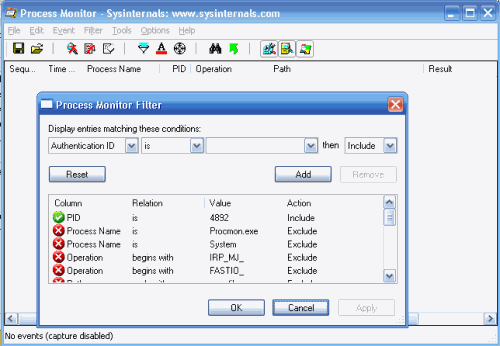

That way, I could pass the script the process id of the window I want to position and there would be no ambiguity as to the exact window I want to change. I changed the script’s ProcessName parameter to ProcessId.I turned the script into a PowerShell module (PSM1) so that more than one PowerShell script I write can take advantage of this tool and.I downloaded this script and made two small alterations: Fortunately, someone wrote a great solution called Set-Window.
#Powershell process monitor windows
Here’s how I went about crafting my solution: Step 1: Establish a windows positioning solutionĪutoIt already has a nice window positioning library included with it, but PowerShell does not. So, I embarked on a PowerShell solution for my problem. I found it challenging to make my AutoIt script sufficiently adaptive between each environment. I work at home occasionally and my multiple monitor setup is different between home and work.

That was an OK solution, but I didn’t find it all that flexible. Initially, I did this with an AutoIt script. Since I like to have these shells in my left most monitor, I sought out a solution to automatically launch and proportionally position multiple command shells in my left most monitor. For example, I like to do my folder and file browsing in my right most monitor and in my left most monitor, I like to do my command shell work.Īt work, I interface with a lot of Linux servers, so I tend to have a few command shells open at once connected to these systems.

When it comes to multiple monitor displays connected to my workstations–either at home or at work–I’m a little like Tim “the Toolman” Taylor: I need more! And just as I carefully separate my peas and carrots, I must carefully separate the sort of tasks I perform on each monitor.


 0 kommentar(er)
0 kommentar(er)
